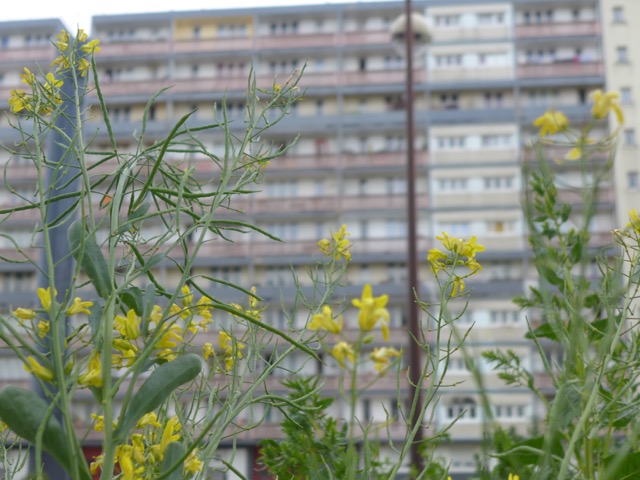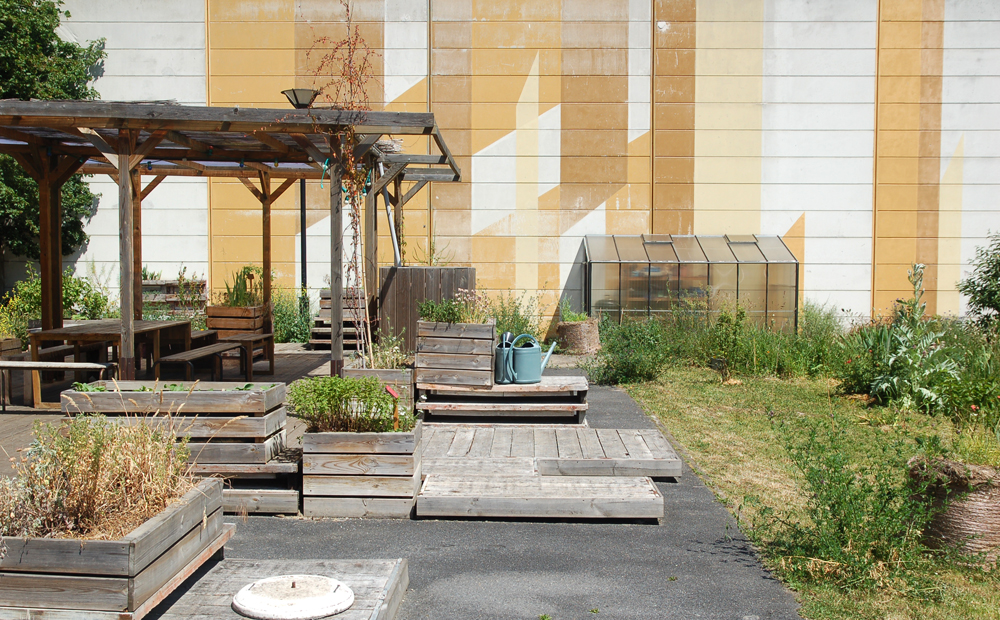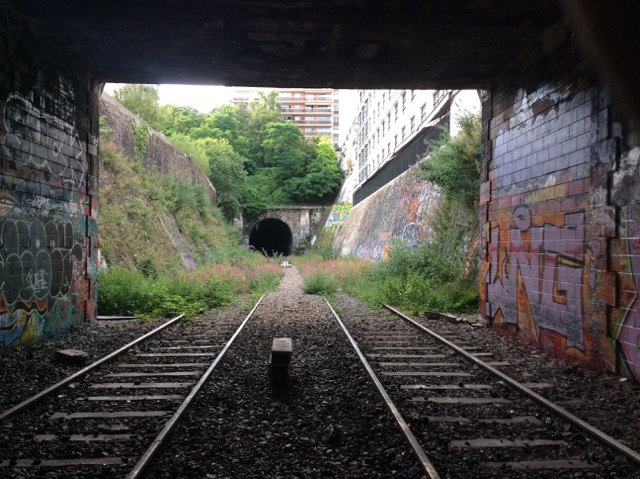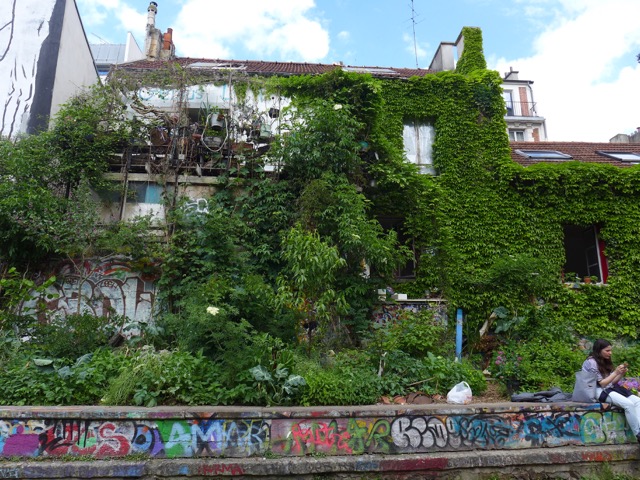LA SEMEUSE
An urban biodiversity research platform
In 2010, in association with RozO Architectes, Marjetica Potrč – artist, architect and originator of the project – embarked on a line of research titled La Semeuse ou le devenir indigène (The Sower, or Local Growth). Initially intended to establish a connection between plant and cultural diversity in the municipality of Aubervilliers, the idea developed into an exchange platform based on gardening and sensitising the public to the preservation of urban biodiversity. The current coordinator is Ariane Leblanc, who is working to set up relationships between public and/or shared spaces and residents.

A RESOURCE AND TRANSMISSION TOOL
La Semeuse is a platform for exchange and experimentation focused on environmental issues, sustainable development and local know-how. Regular get-togethers are held to talk about the "grainothèque" seed bank, plants and individual skills. La Semeuse is now a fully-fledged cooperative network, taking a long-term approach to developing dynamic partnerships between environmental, social and cultural stakeholders and thus promoting dialogue and experience-sharing.
One of the aims of La Semeuse is to generate situations capable of heightening our awareness of the unobtrusive, marginalised or downright unnoticed human and vegetal beings around us and so inducing forms of action and transmission. Faced with the difficulty of finding spaces that can be appropriated and getting free of the "time is money" syndrome, La Semeuse is receptive to the rich variety of measures, information, narratives and practices available from the people of Aubervilliers, which it then uses to create shared experiences and a commonality on a local scale.
Plants are no longer just a decorative extra. As a thoroughgoing political agent testifying to a collective history, the plant kingdom is an integral element of policy-making and practical economics. Residents no longer settle simply for consuming their space; they want to take a hand in it and in doing so are creating a new kind of socially conscious urbanism that notably involves action at neighbourhood level. Aubervilliers' gardens, for example, help reactivate the municipality's memory, in particular regarding its market-garden past. They also enable development of uses that embody fresh connections between nature and people in the urban context.
La Semeuse is a resource and transmission tool, a platform available to all. A mutual aid node that generates transmission facilities deriving from those involved.
The regular get-togethers take different forms: encounters, talks, and workshops for exchange and transmission of local practices, experiences and skills.

SITE, MATTER, USE
La Semeuse, Urban Diversity Research Platform, is a project being developed within Laboratoires d'Aubervilliers. Its aim is to sensitise users of the city to the "volunteer" biodiversity to be found in gardens, in cracks in footpaths and on brownfield sites. Better known as "undesirables", these undomesticated plants benefit both the soil and people and are evidence of a wild biodiversity rich in secrets but often passing unnoticed on the urban scene.
These green nooks and crannies raise the broader issue of interstices in society: those of sexual identity, of nature asserting its rights outside gardens and domestic spaces, and of the city and its ability to come up with new, everyday uses going counter to current forms of capitalistic consumption. Interstices – the gaps "between" things – allow an osmosis between different types of urban spaces that opens up the possibility of subjective appropriation. Interstitial activism is a way of playing on imposed city planning rules; those interstices are capable of taking a host of different forms, offering fresh rationales for action and urban space appropriation and enabling the creation of forms of resistance in a context of marked standardisation and prioritisation. Interstices constitute, so to speak, a receptivity backup, a way of loosening up the different time frames traversed by residents and thus limiting the hold of institutions. Being ephemeral and shifting, they hint at or give a glimpse of other possible approaches to a given activity or other processes of city-making, at once more open and collaborative, more responsive and transversal. This is how the "ordinary" things – gardening, playing, picnicking – that take shape in these spaces become a social and political experience.


Project updates: https://semeuse.wordpress.com/
Contact: Ariane Leblanc
+33 (0)6 95 85 01 61
lasemeuse.aubervilliers@gmail.com
_________________________
La Semeuse enjoys the backing of the Ile-de-France Regional Council, the Plaine Commune intermunicipal grouping and the City of Aubervilliers.
We would like to thank all those who have helped energise the project by giving so generously of their time and enthusiasm, and in particular Valérie Lessertisseur; the Auberfabrik association (Sylvie Napolitano, Valérie Truong and David Caubère); Alain Chapel of Les Petits Prés Verts (Aubervilliers); Yassine Elkherfih of the ya+k collective; Bloc Paysage (Tibo Labat, Morgan Blanc, Louise Lefebvre and Vincent Confortini); Jardins Ouvriers des Vertus (Aubervilliers); Bois de Senteur (Aubervilliers); the Lécuyer Crèche (Aubervilliers); the ALJ93 and ADEF associations; the Cité des Fusains artists' residence; the Boutique de Quartier Paul Bert; the Community Associations, Local Democracy, Social Economics and Parks and Gardens departments in Aubervilliers and Plaine Commune; the Lapeyre company.
images __ tous droits réservés

